Why You Should Never Tighten Your Garage Door Cables Yourself
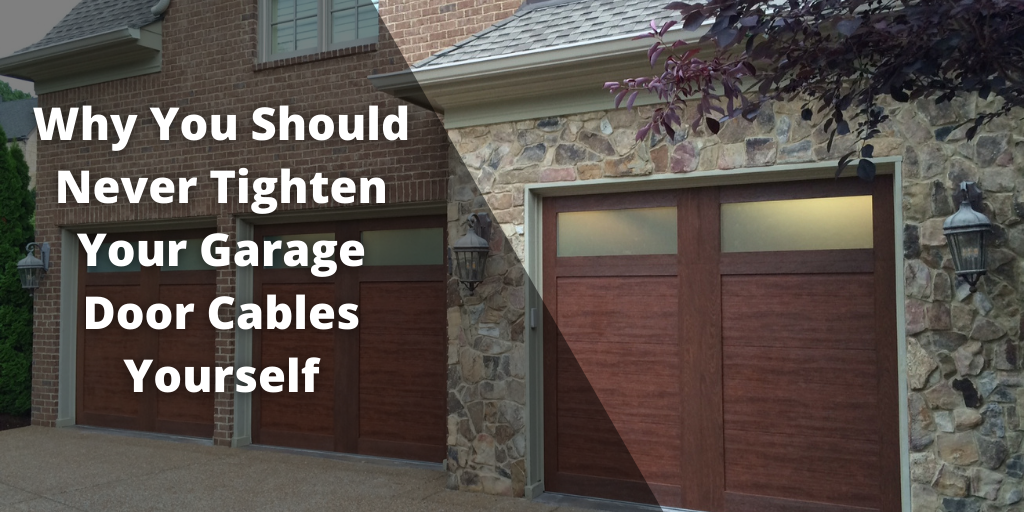
Cables play a vital role in any properly functioning garage door system. You’ll find them attached via brackets to either side of the bottom of the door. They work in tandem with the torsion springs to raise and lower the door.
These cables also perform a crucial safety function. When a spring fails, the cable prevents it from recoiling and causing a potentially serious injury. Instead, the snapped spring will fall harmlessly to the ground.
What Happens When a Cable Snaps?
Garage door cables consist of galvanized wiring that may fray due to wear and tear. Eventually, a frayed cable will snap, transferring additional tension to the other side and making it more likely that the other will break as well. Your door will appear crooked or unbalanced and won’t open and close as easily. While you can usually spot a broken cable by performing a visual inspection, a squeaking noise or unusual shaking during operation can also indicate an issue requiring immediate attention.
Why Do Garage Door Cables Loosen?
Besides fraying or snapping, garage door cables can become loose and fall off the drum, which causes them to wind and unwind when raising or lowering the door. Loose cables can result from:
- Mismatched cables and drums
- Failure of the auto-reverse mechanism that causes the door to strike an object and loosen a cable
- Improper installation
- Broken torsion springs
- Frequent door opening and closing
How to Adjust Garage Door Cable Tension
Regular maintenance is crucial for ensuring that your garage door cables are functioning with the proper tension. The process can be complicated, dangerous and requires mastering the following steps:
- Lower the door to the ground and ensure there is no gap at the bottom.
- Release the opener from the drive chain by pulling on the rope attached to the garage door mechanism.
- Raise the door to the open position to release the built-up tension in the torsion springs.
- Attach two c-clamps to the track underneath the roller closet nearest to the bottom of the door to prevent it from lowering or moving.
- Disconnect the end of the cable from the garage door frame and reinsert it into one of the holes further down the frame to cause it to tighten.
- Eliminate any remaining slack by adjusting the cable bracket.
Can You Tighten Garage Door Cables Yourself?
Even if you’re confident in your mechanical abilities, it’s easy for an inexperienced homeowner to overlook a step or face an unexpected issue during the adjustment. A garage door professional knows what to look for and how to avoid potentially costly mistakes.
Still, safety is the most important reason to hire an expert. You’ll avoid the dangers of working around high-tension springs and heavy overhead doors.
Contact EXL Garage Doors to Learn More
If you need to make a garage door cable tension adjustment near Gallatin, TN, the experienced pros at EXL Garage Doors are ready to help. Contact our team today to learn more or request services.
How to Use a Garage Door Inside Your Home
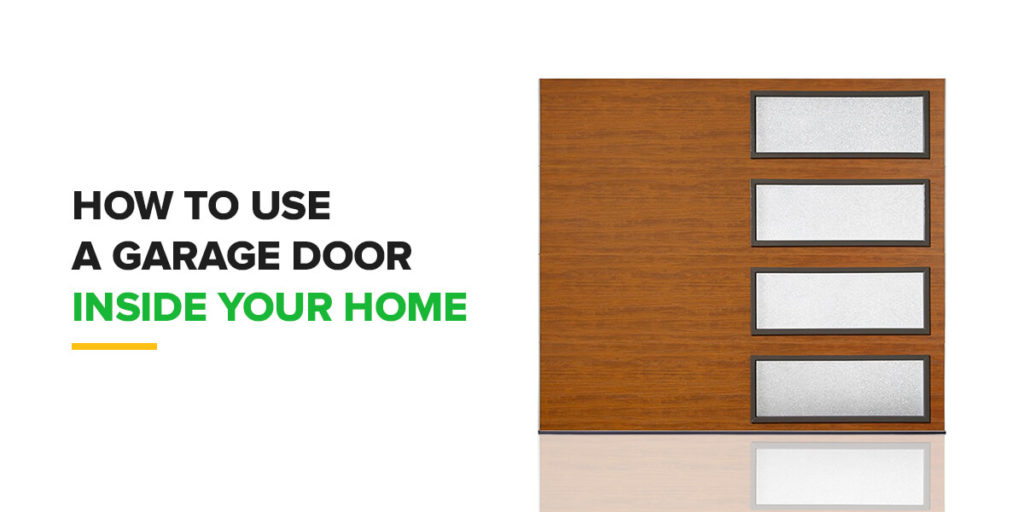
Have you ever considered putting a garage door inside your home? No, not the place where you park your cars or store your camping gear. We’re talking about a living room garage door or a garage door to separate rooms.
It’s understandable if your first reaction was confusion or resistance. But the latest trend for architects is to install indoor garage doors in residential homes. It’s not a bad idea, as it opens up so many possibilities for homeowners to enjoy their houses in a whole new way. Discover how to use a garage door inside your home, the benefits of using interior garage doors and other tips on making the most of this new trend in the housing industry.
Where Can You Incorporate an Interior Garage Door?
The primary use for these garage doors is to use them as wall dividers. This can be accomplished in several different ways throughout your home. Whether you’re using them to separate exterior and interior areas or simply to divide two rooms, garage doors will make a house look chic and modern.
The possibilities of how you use garage doors inside your home are endless, so here are a few of the most popular ideas for incorporating interior garage doors.
Kitchens and Common Areas
The most popular place to install an indoor garage door is in your kitchen. You can use half garage doors as an upgraded skylight. Simply choose a glass garage door design that matches your style, and you can have skylights that actually open up to the outdoors.
Another great way to incorporate interior garage doors into your kitchen is to use them to separate the kitchen and living room, especially in open floor plans. This allows for increased flexibility in how you use your home, providing privacy or sound reduction when needed, but also allowing for large gatherings for a party.
Kitchens have actually featured this trend before, just on a smaller scale. Countertop garage doors provide a convenient way to hide away appliances and other kitchen supplies in cabinets.
Patios, Pools and Sunrooms
One great purpose of a garage door is to open up a home to outdoor spaces. If your home has a patio or a pool, consider installing a garage door to give your home a modern feel. It’ll make taking food, tables and other household items from the kitchen to your outdoor living space so much easier. You don’t have to fuss with opening and shutting a sliding glass door when you have an interior garage door.
Having pool parties will just get better as a garage door will allow you, your loved ones and your guests to move freely from the comfortable couch in your living room to swimming in the pool. Sunrooms will become new and improved, enveloping you in nature like never before. Instead of having traditional windows that you can only open a little bit, interior garage doors will allow you to feel the breeze and the warmth of the sun as you relax in your sunroom.
Other Interior Garage Door Ideas
Aside from using garage doors in the main gathering places of your home, you can also have them in all the rooms in your house. Now that people work remotely more than ever, many are converting the exterior wall of their home office into an interior garage door.
When you feel “strapped” to your desk all day, it’s nice to hear the birds outside, listen to the rain or enjoy the fresh air while you work without having to leave your desk. Other areas where you can use interior garage doors include a home gym, bedrooms, bathrooms and closets.
What Are the Benefits of Indoor Garage Doors?
Are you still curious as to why using garage doors inside your home is such a trend among architects and homeowners? There are actually several benefits to installing interior garage doors in your home. Some of the main reasons why homeowners are using indoor garage doors are that they:
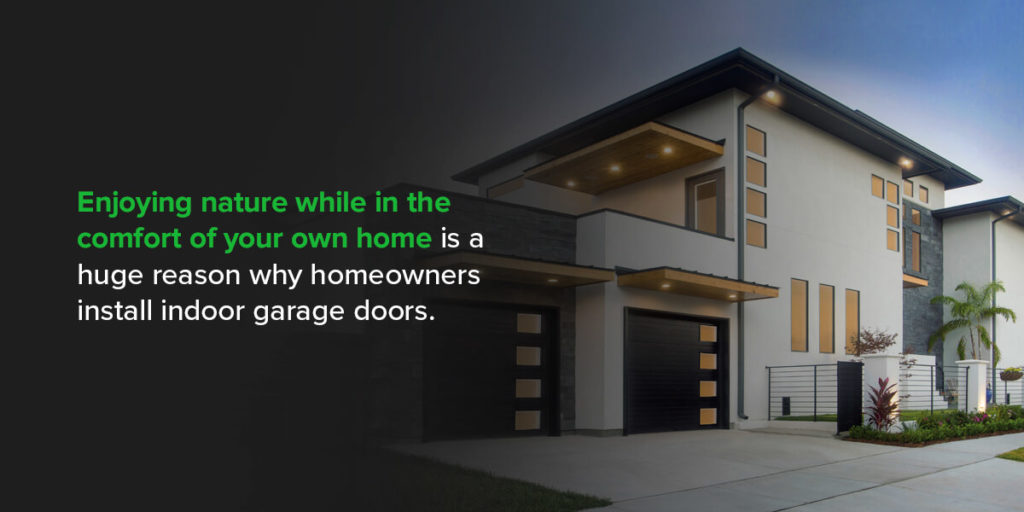
Open up the Home to the Outdoors
Enjoying nature while in the comfort of your own home is a huge reason why homeowners install indoor garage doors. A garage door becomes a unique feature of your home, and it lets more light into the room when the door is open. The amount of natural light in a room gets even better when the garage door is made of glass and has an aluminum grid design. If you choose to go with a glass garage door, you can have tinted or frosted glass to maintain privacy.
Are Cost-Effective
Interior garage doors do open up your home to the beauties of nature, but they’re also very cost-effective. This is possible because if you want to turn one room into two, you don’t have to hire a builder or attempt to do it yourself, waiting months for the job to get done. Instead, simply install a garage door in only a few days, and you can have your home just the way you want it.
Being able to make changes to your home in a way that’s easy on your budget is great, but that’s not the only benefit. Having an interior garage door can also make you money by increasing the property value of your home.
What Are Some Interior Garage Door Do’s and Don’ts?
Now that you know how to incorporate interior garage doors into your home and the benefits of using them, there are some do’s and don’ts to consider before installing your first indoor garage door.
Purchase a Quality Indoor Garage Door
The most important aspect to consider when buying an interior garage door is to make sure you get a high-quality design. Especially if the garage door is going to replace an interior wall, you’ll want to make sure the door offers some sound reduction. The last thing you want after installing a garage door is being able to hear every sound that happens on the other side of the door. Having a garage door in your home doesn’t mean you have to give up the sound reducing benefits of a normal wall.
In addition to making sure your garage door offers sound reduction, it’s good to research motors before you install one. You don’t want to have the motor of your kitchen garage door be loud and echo throughout the house.
Ensure Your Interior Garage Door Fits With Your Home
Even if you want to install a garage door in your home, it should complement your home’s overall look. Take a look at your floor plan to see if it can reasonably accommodate an indoor garage door. If your floor plan is too cramped, you may need to make adjustments to your initial plans.
You should also look at the style of your home. Is it Victorian, colonial, French or something else? Ask yourself if an interior garage door would distract or complement your home. Experts say that homes with a contemporary or industrial design work the best for adding interior garage doors.
Evaluate if Your Home’s Location Is Conducive to an Indoor Garage Door
After you’ve determined the quality of garage door you’d like and that your home is a great fit, there’s one last thing you need to think about — your home’s location. Having indoor garage doors in your kitchen, living room or other living spaces is a great advantage for homes and rental properties in warm or scenic locations, like the beautiful Appalachian mountain range in Tennessee.
Regardless of what kind of temperatures you have year-round, it’s important that the garage door has good insulation. This is especially crucial if the garage door is the only barrier between the exterior and interior of your home. Have good insulation and weatherstripping to prevent your utility bills from increasing dramatically and to deter insects from entering your home.
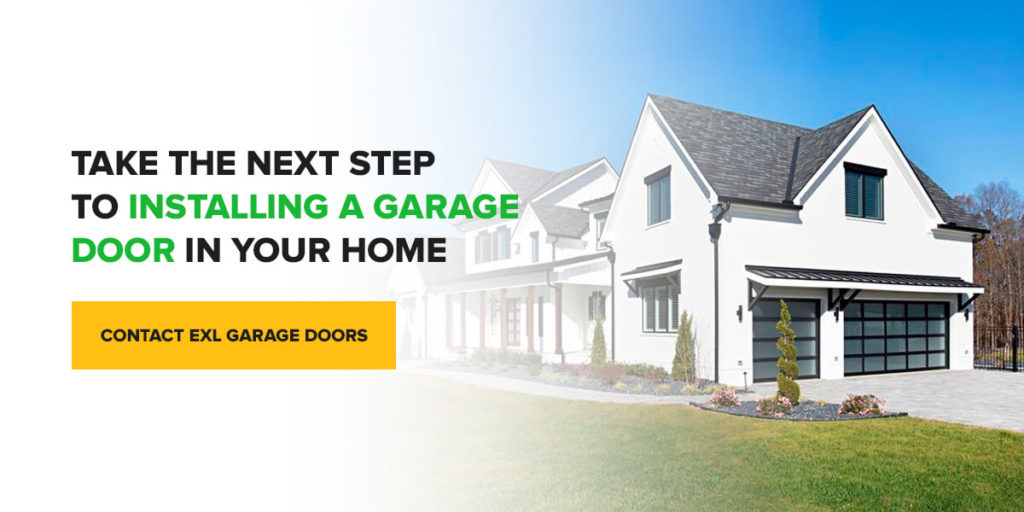
Take the Next Step to Installing a Garage Door in your Home
With so many great reasons to add an interior garage door to your home, this raving trend among homeowners and architects probably makes more sense now. It likely won’t be going away anytime soon as interior garage doors provide access to the outdoors, are cost-effective, increase property value and enable homeowners to host gatherings with loved ones as never before.
Contact EXL Garage Doors to learn more about how to install your home’s indoor garage door. With years of experience and a showroom to display our products, we’ve made it easier than ever to transform your home using our high-quality products and commitment to exceptional customer service. Request an estimate today!
Garage Door Systems: How Do They Work?

Garage door specialists know how their doors work, but most people rarely think about it. You might have approached the inner workings of your door system with idle curiosity, but how do garage doors actually work? The short answer is that a motorized system of hardware lifts your door at the press of a button.
Understanding how a garage door opener works in-depth can help you recognize problems. If you know which parts malfunction, you can tell the professional who repairs them. This guide will teach you how garage doors work, and how the parts make them function.
How a Garage Door System Works: The Mechanics
When you press the button on your transmitter, it signals the door opener mounted on your ceiling. Contrary to what the name suggests, the door opener’s motor simply guides the door’s movement, while the springs hold the door by counterbalancing its weight.
As the door moves up or down the track, rollers keep the movement smooth. The close time dictates how long your motor runs before the door reaches its closed position.
When these mechanics malfunction, the ability to identify the problem comes in handy. You can discuss the issue with a garage door specialist, making it easier for them to trace and diagnose the cause of the problem. Communicating what’s wrong with your garage door helps you get it fixed faster.
How Garage Doors Work: Parts
That simple explanation of how a garage door system works ignores the crucial parts that make your door function. These parts are some of the most important components that make up your garage door system:
- Door opener: The door opener contains the motor and receives the transmitter’s signal.
- Springs: Springs balance your door’s weight. Most modern garage doors have torsion springs because they’re safer and last longer, but older doors may have extension springs.
- Cables: Cables assist the springs as your door moves. If your door has extension springs that have broken, your cables can snap from the door’s weight.
- Tracks: Tracks keep your door on the right path. You should see vertical and horizontal tracks.
- Rollers: Rollers assist the door’s movement along the tracks for steadiness.
- Hinges: If you watch your garage door as it opens and closes, you’ll see it articulate in a few places. Hinges allow your door to fold over on itself so it fits into your garage.
- Insulated weatherstripping: Installed on the edges, frame and each section of your door, weatherstripping seals the door to insulate your garage from the heat or cold.
Request Maintenance or Repair for Your Garage Door
When your garage door needs routine inspections, maintenance or repairs, call a professional to fix it. EXL Garage Doors offers expert installation, repair and maintenance services in Middle Tennessee.
When you contact us about our services, we’ll send a member of our highly trained team to address and resolve any issues. We’ll also give you a quote before doing the work to find the best plan for you. For expert maintenance and repairs, call EXL Garage Doors today at (615) 863-5106.
Why is My Garage Door So Loud?

Does your door make too much noise when you open it? The reasons for the new racket can vary. When garage doors squeal, bang, rattle and make other unusual sounds, it can be a source of frustration for you and the rest of the neighborhood. Thankfully, in most cases, you can save money — and your sanity — by fixing the problem yourself. Here’s how you can go about taking care of the issue.
How to Fix a Noisy Garage Door
The sounds a noisy garage door makes can differ, as can the causes behind them. Garage doors can rattle, squeal, bang, scrape, grind or make a combination of noises throughout operation. The best way to pinpoint the source of your extra noise is an inspection. Check all your components while the door is stationary, then listen and watch while using your door.
If your garage door is noisy, try these simple DIY fixes to silence it:
- Lubricate your components: Garage doors have many moving parts, and all of them require constant lubrication to perform their best. If your garage door squeals while opening and closing, it could be due to poor lubrication. Inadequate lubrication causes friction, which can also lead to vibrating, grinding and garage door screeching. Spray your springs, rollers, tracks, chain and other hardware down using a silicone lubricant to help quiet the door’s operation.
- Check your tracks for damage: When you open your garage door, the rollers move through the tracks mounted on each side, keeping the door aligned. If the tracks are bent or damaged, they can place pressure on the rollers and create a loud rubbing noise. If the damage is minor, you can pull the track back into place using the claw of a hammer. Insert the claw into the lip at the inside of the track and use it to bend the track back into its original position.
- Tighten or replace any loose parts: Garage doors vibrate when opening, and over time, your hardware can become loose and start making noise. Rattling sounds and squeaking are signs of loose parts, and they’re often something you can easily take care of in a matter of minutes. Inspect your garage door from top to bottom for any loose nuts, bolts, rollers, hinges or chains, making sure to tighten or replace anything that needs your attention.
- Perform regular maintenance: Once you take care of the cause of your noise, help keep your garage door working quietly with proper maintenance. At least once per year, inspect your garage door system for any damage, sounds and signs of wear. Clean any dirt and grime out of your tracks and lubricate the metal hardware, including the springs, bearings and rollers.
Professional Garage Door Care
Place the regular maintenance of your garage door in the hands of a professional. If you own a home in the Gallatin or Nashville areas, reach out to EXL Garage Doors to ask about our garage door maintenance services.
Garage Door Maintenance Checklist
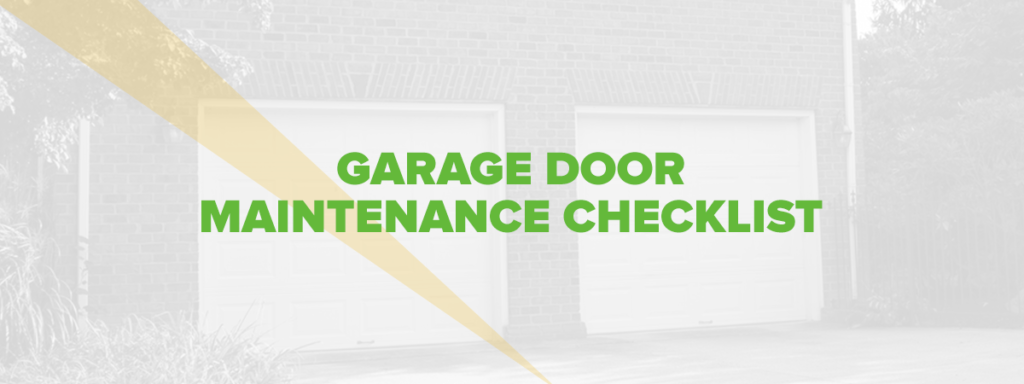
Like many homeowners today with garages, you may open and close your garage numerous times a day. You may not realize anything is wrong with your garage until something doesn’t work correctly or your garage makes an odd sound. However, it’s crucial to take preventative measures when it comes to your garage door — especially if you use it heavily. One way to make sure your garage door is in great shape is to keep up with regular maintenance. Trust professionals to perform garage door inspections and maintenance at least a few times a year, as they are more likely to catch anything wrong with your garage door and can fix it before it causes any more damage. In between professional maintenance visits, you can go through this garage door maintenance checklist to keep an eye on the different parts of your garage door.
Spring System
Broken garage door springs are one of the most common garage door issues. When you look at your garage door, there are usually two torsion springs above the door and extension springs on the side. These torsion springs are super strong pieces of metal that are tightly wound, creating potential energy that powers the springs to open and close your garage door when using the opener. The garage door opener acts to wind or unwind the springs for your garage door to open and close. Although these springs are designed to last about 10 years, all springs eventually wear out. Sometimes your garage may make a loud sound when springs no longer work, but sometimes your garage will not function correctly, have a hard time trying to close or open or stop working altogether when your springs break.
Since springs contain potential energy, you could severely hurt yourself if you attempt to replace your garage door springs alone. You must contact a professional garage door technician, who will arrive with the necessary tools and parts to repair the springs safely. However, just because a professional should perform replacement and maintenance doesn’t mean you can’t inspect springs as part of your regular garage door maintenance. Look for any visibly worn out, fragile or rusted springs and contact a professional if any look broken or like they’re about to break. You may be able to solve minor issues by applying lubricant.
If you’re unsure of the condition of your springs, you can do a garage door balance test. First, disconnect your door from the garage door opener, then manually lift your door. If you can’t open the door manually, call a professional at once. If it moves smoothly up and down, try leaving it half way. A well-balanced door will stay in place. If there is any movement, your door will likely fall down because the springs have lost tension. Never attempt to adjust the springs yourself and call a professional instead.
Hinges
Although your garage door hinges are small, they are necessary to ensure your garage door can still open and close. If your hinges break and go undetected, it could lead to more severe damage, such as messing up your door’s guide tracks or damaging panels, which could eventually lead to an entire door replacement. Wobbly or missing screws may be the first sign that you need to replace your hinges. If screws are loose or missing, the metal plate they were in may have deteriorated. Sometimes using a nut and bolt to replace the screw provides a temporary fix. You should regularly check to make sure your screws are tight, that nothing is bent or twisted and that the lifting cable is attached to the hinges at the bottom of the door correctly to ensure your door is in excellent condition.
You should also check regularly for any rust or corrosion when you inspect your hinges. You may opt to use an oil lubricant on your hinges and other moving parts on your door to help prevent corrosion and other wear. Consult with a garage door professional to learn how to lubricate your garage door and determine which lubricant you should use for your specific model. If your hinges go beyond minor issues and you suspect they need to be replaced, you should also refer to a professional for help as soon as possible. It’s a lot easier to have someone fix your hinges than replace your entire garage door. Keeping up with regular maintenance will ensure you know how your garage door is holding up, and know when it needs help from a professional.
Rollers
Your garage door rollers are crucial to smooth operation, opening and closing as your garage door should be. However, if you notice your garage door has gotten extra noisy when it opens and closes, your rollers are likely starting to misalign or aren’t moving correctly along the tracks. Sometimes rollers can be fixed with track grease, which helps the door open and close smoothly again and minimizes some of the noise, but other times rollers may need to be replaced. If your rollers don’t have enough lubrication, this could also lead to the garage door shaking, roller bearing failure and the loud opening and closing.
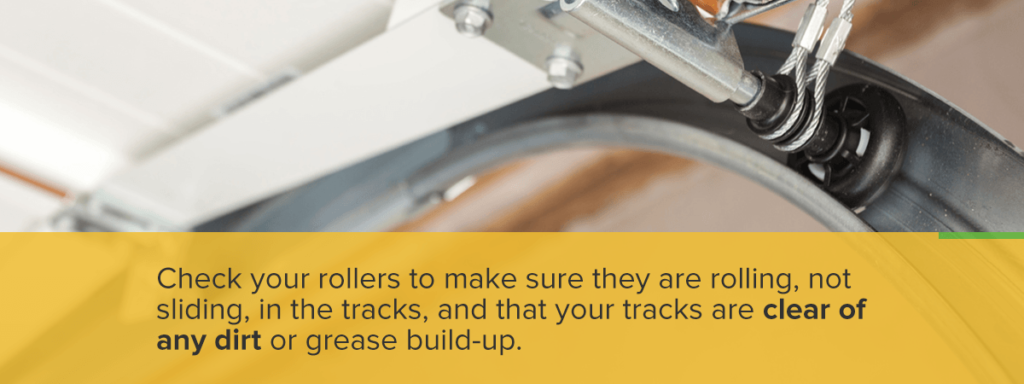
Check your rollers to make sure they are rolling, not sliding, in the tracks, and that your tracks are clear of any dirt or grease build-up. If your garage door tracks are filthy, your rollers may not move properly, so clean them regularly. Rollers may also go off of the tracks if the tracks aren’t anchored against the wall tightly, so check the brackets to make sure they are tight and that the tracks are where they should be. Be cautious of accidentally bumping your garage door with your car or any other large object, as this could also cause tracks to become misaligned and cause problems with rollers. If you keep up with maintenance and still suspect your rollers need to be replaced, contact a professional for help.
Lifting Cables
Garage door lifting cables are incredibly durable cables that allow your door to open and close by controlling the torsion springs. The cables prevent the springs from recoiling, so the springs can continue to do their job correctly to open and close the garage door safely. However, cables won’t last forever and may lose tension over time, so you must get them replaced when they’re showing signs of the end. How will you know when the cables are ready to be replaced? Usually, you simply have to look at your garage door. If your cable is rusted or frayed, you can tell by looking at it.
Additionally, if you notice any loud noises like screeching, rattling or grating, delayed opening and closing or not opening and closing at all, it could indicate a problem with your garage door cables. You should make sure your cables wind around the reel at the top of the vertical track and are functioning correctly. If your cables need to be replaced, make sure you trust a garage door professional to get the job done. If you attempt to replace cables yourself, you could be seriously injured since the spring and cable mechanism is fragile yet extremely powerful. You could also accidentally damage your garage door system, which could void your warranty.
Garage Door Opener and Sensors
If you’re having issues with your garage door opener and sensors, you could either repair your garage door opener or replace it altogether. However, it’s best to seek professional assistance when it comes to a faulty garage door opener so they can help determine which option would be best for you. If your garage door opener is 10 years old or older, a replacement is usually the best option, even if it could be fixed with a repair. Piling up repairs instead of replacing the opener is a temporary fix that will only lead to more repairs. Plus, new technologies are always emerging to take advantage of, so don’t get stuck with an outdated system.
To make the most of your garage door opener, however, make sure you regularly change the batteries in your remote. You should also make sure your garage door opener is compatible with a backup battery to use if the power goes out. If the power goes out and you don’t have a backup battery, you can’t open your garage door with your opener and would have to disconnect it from your opener and manually lift it. To test your garage door sensors, you could also conduct a reversal test. Start with an open garage door and put a 2-by-4 flat on the ground in the center of the door. Then, hit your opener to close the door. If the door hits the wood and doesn’t reverse immediately, you need to contact a professional for maintenance.
Contact EXL Garage Doors Today for Garage Door Maintenance and Repairs
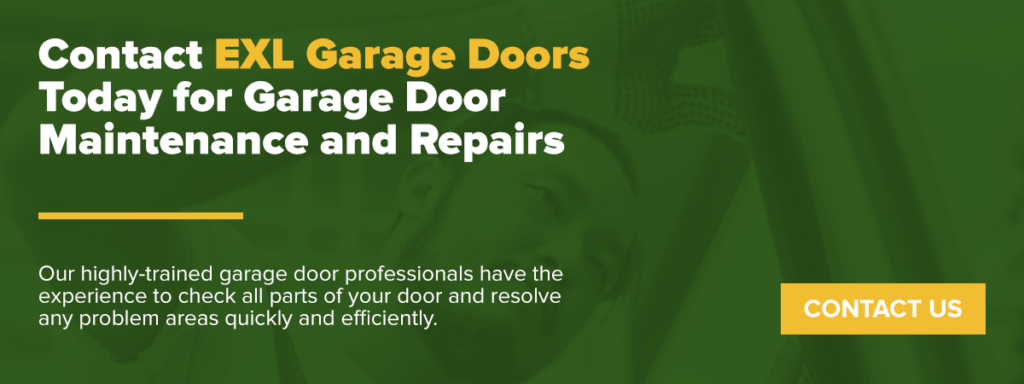
Whether your garage door needs some routine professional maintenance to ensure everything looks how it should or you suspect something is broken and needs to be repaired or replaced, don’t keep putting it off. EXL Garage Doors has served customers throughout middle Tennessee for more than 20 years and can help you find the best solution to prolong the life of your garage door. Our highly-trained garage door professionals have the experience to check all parts of your door and identify and resolve any problem areas quickly and efficiently. Don’t wait, contact us and request a service today to keep your garage door in its best possible condition.
